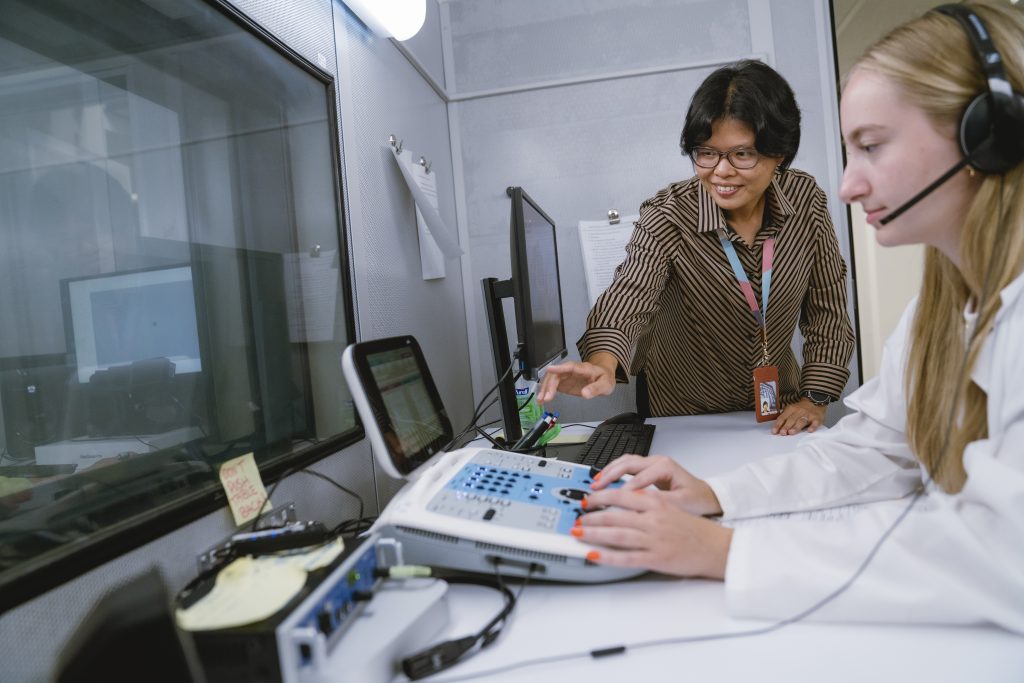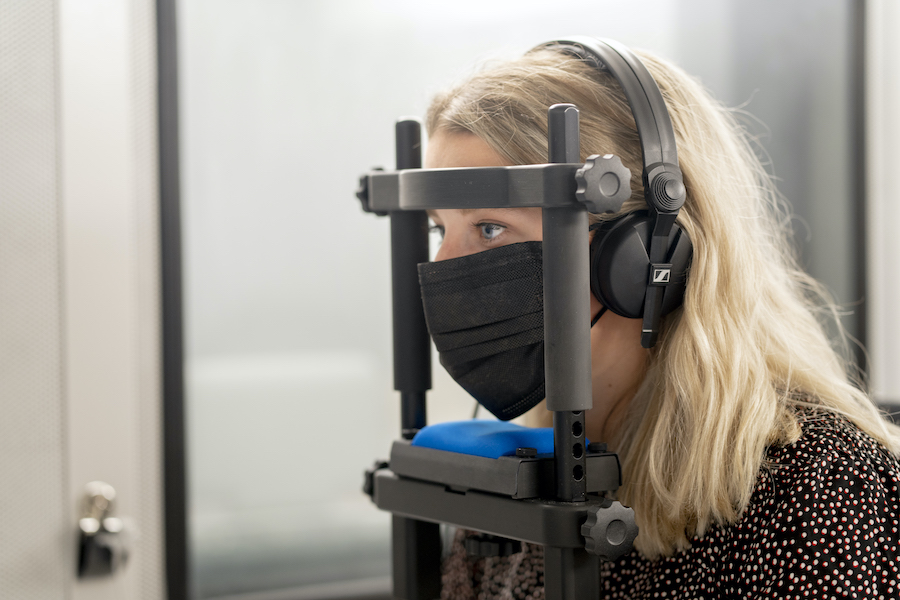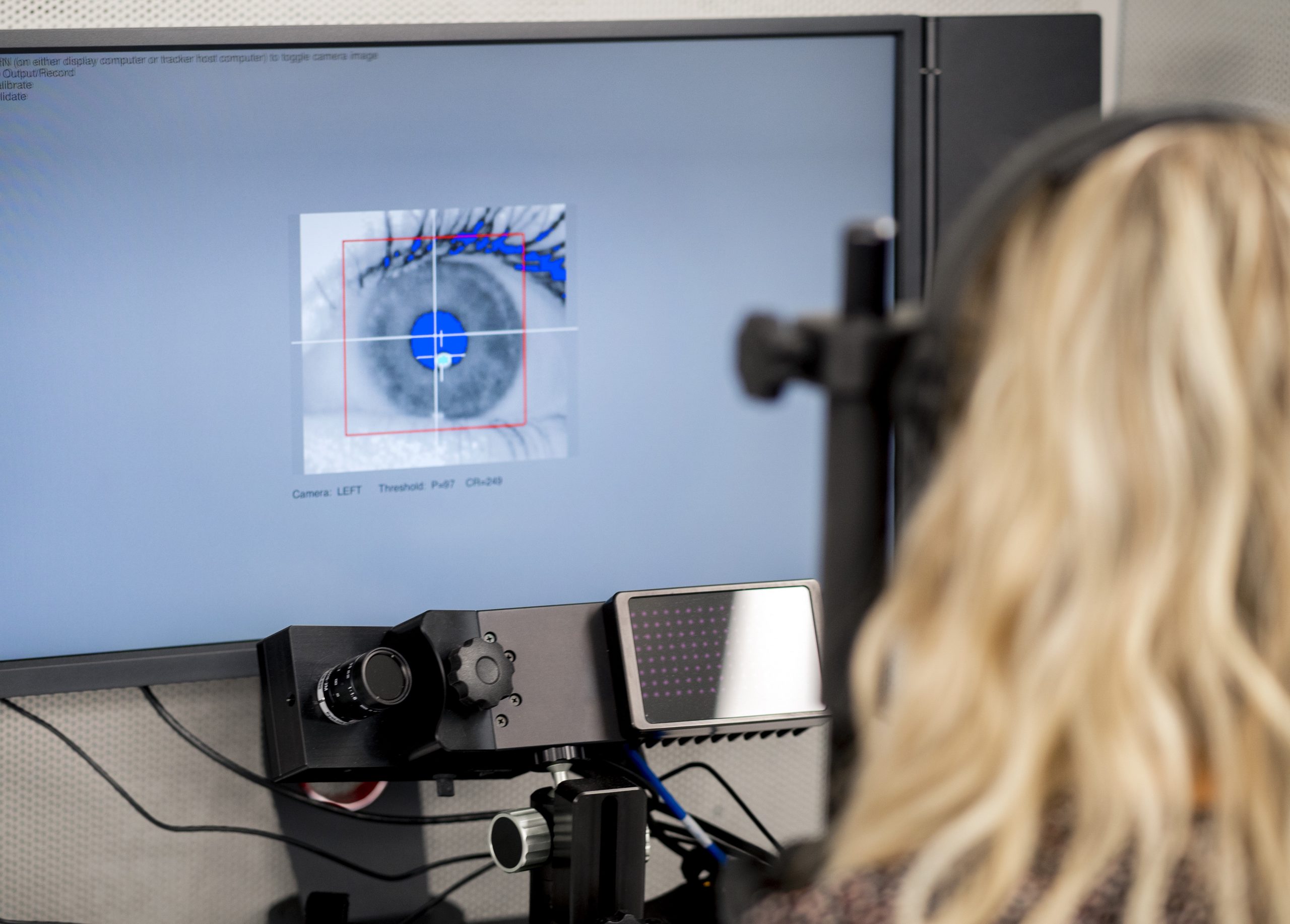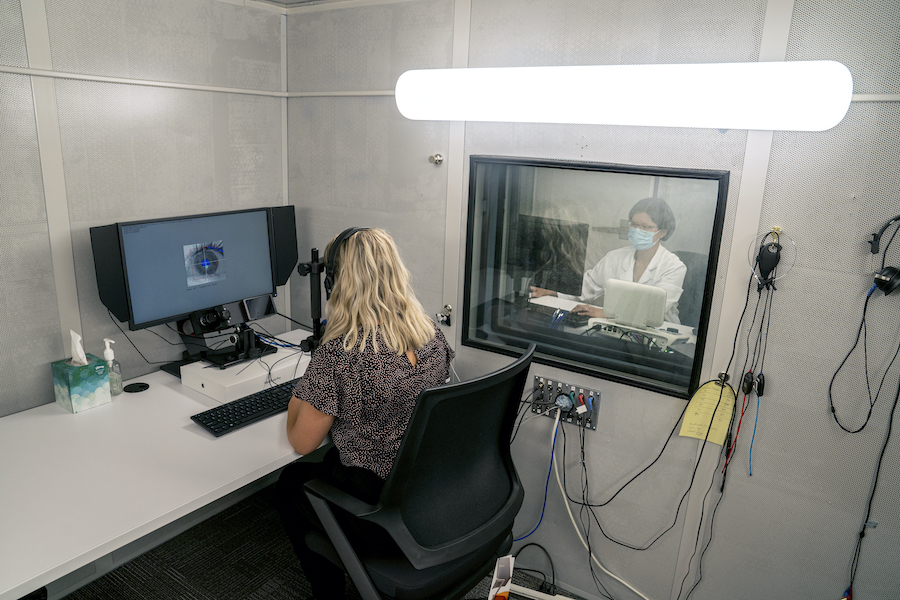Prosodic Cues in Speech Perception in Complex Environments

One barrier to effectively assessing and treating pervasive speech perception problems in older adults with hearing loss is the weak ecological validity of testing protocols, which do not capture listeners’ effort or accuracy outside of the testing booth. Speech audiometry measures focus on perception of words and do not include facilitative prosodic cues that occur across phonemes and words, such as changes in intensity, duration, and fundamental frequency. Our research addresses this critical knowledge gap by using multiple behavioral and physiological measures to determine the effects of prosodic cues on older listeners’ speech understanding, in noisy environments and with hearing aids.
Future Outcome Measures for Speech Perception in Real-life Communication

Clinically, traditional behavioral outcome measures such as speech recognition accuracy can fall short of sensitivity in capturing the effortful real-time processing of speech under adverse conditions. We capitalize on the measures of pupillometry and eye-movement and explore their potential to provide insights for understanding how perceptual and cognitive mechanisms interplay and affect older individuals’ perception of speech as they process it. Combined with other neurophysiological measures that can be used in real-life scenarios, the ultimate goal of this work is to develop outcome metrics based on multiple physiological measures and sophisticated data modeling.
Influence of Language and Hearing Experience on Prosody Perception
To serve the fast-increasing aging bilingual population, we need improved clinical practice of audiology and speech pathology with strong cultural/linguistic sensitivity. In an ongoing project, we examine prosody perception in bilinguals who are native speakers of tone languages and speak English as a second language. This project provides insight into whether experience with tonal languages provides an advantage or disadvantage in perception of English prosody. The outcome of this research can inform the development of clinical assessments and interventions that impact access to English prosodic cues in bilingual listeners.



